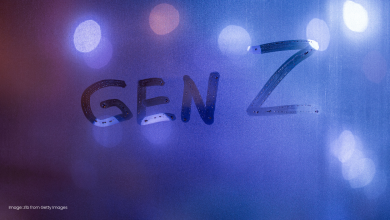
Storytelling has been proven as a way to engage readers or viewers with your messages, whether they are in picture or video form. It is actually 22 times more memorable than using only facts, according to Dr. Jennifer Aaker. Why? Informing people without stories is like delivering dry, lifeless text. In this situation, the readers or viewers often feel that there is no sense of connection or curiosity, making it hard for them to engage or respond. As a result, it quickly loses their interest and bores them.
People are better at guessing the past than the future
In the study, people watched scenes from TV shows. When they were asked to guess what had happened before the scene, they did much better than when they had to guess what would happen next. They also found that people tend to talk more about what has already happened in the past rather than what might happen in the future. This is because we usually remember things that have happened in our lives, like experiences and stories. Our memories are clearer about the past, so it’s easier to make guesses about it.
Starting In the Middle: A Storytelling Hack
How can this method be done? In professional settings, this ‘guessing’ method could also work well to make the audience curious and focused on what you are trying to deliver. This can be done by putting a problem or scenario without its solutions or clear conclusions. Then, use open-ended questions such as “What do you think is the root cause of this problem?” This will make their brain start thinking and make them engage in the narrative more.
Additionally, adding more elements, such as interactive elements and real-life examples, or making them participate in a discussion or quiz, will invoke engagement. To make it more engaging, also include takeaways to summarize the insights that have been discussed.
Another perfect example of this is the popular K-drama Lovely Runner, which effectively demonstrates this technique. In the first episode, the story opens with an in-hospital scene where the female lead receives a phone call from the male lead, a K-pop idol. Her expression remains blank, reflecting her uncertainty, while he displays a mixture of disappointment and sadness.
This scene gained much curiosity and has been talked about across social media platforms. Some viewers see it as the female lead presumably not remembering him, and others also guess she might not have a memory due to an accident. From the very start, the drama incorporates a strong hook that immediately sparks curiosity drawing viewers in and encouraging them to engage more deeply with the unfolding story.
It creates ambiguity. Leaving certain details ambiguous allows readers or listeners to fill in the gaps with their interpretations. For instance, a situation showing a mysterious character with details such as a familiar, distinct key the viewers have seen somewhere will create ambiguity. Through this unclear scene, people could interpret it in multiple ways.
It makes conversations flow. When there are gaps within the stories, there will be more room for a lot of thoughts and ideas, discussions, and debates to flow. Today, where storytelling frequently happens online, especially on social media platforms like TikTok and X, these gaps encourage audiences to engage and share their interpretations. This makes these platforms have a richer exchange of perspectives.
Conclusions
Using the guessing method in your storytelling can boost audience engagement by tapping into their natural curiosity and memories. When you start in the middle of a story and present situations without clear answers, you encourage your audience to actively join in and figure out what happens next. This approach helps build stronger connections and leads to interesting discussions and different interpretations, making the experience more enjoyable.




